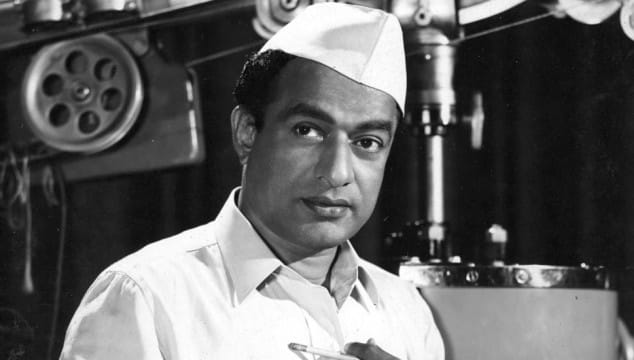V Shantaram cast women in lead roles & made the characters rebel against unjust social norms. He is also known for experimentation, which drew wide acclaim.
New Delhi: V. Shantaram is remembered today as one of the pioneers of Indian cinema, not just for his penchant for experimenting with filmmaking techniques, but also for his portrayal of social themes.
He was one of the first Indian directors to put women front and centre of his films, treating them as individuals who could rebel against social norms.
On his 117th birth anniversary, ThePrint looks back at the life and career of the actor, producer and director, who made an outstanding contribution to both Hindi and Marathi cinema.
Formative years
Shantaram Rajaram Vankudre was born on 18 November 1901 in Kolhapur, Maharashtra. He developed a fascination for music, acting and cinema at an early age.
As a young man, did not hesitate to do odd jobs. He knew he was made for films, and this pull towards the world of cinema helped him become one of the finest filmmakers of his time.
His stint in Baburao Painter’s Maharashtra Film Company for eight years enabled him to fine-tune his skills in direction and acting.
Before he began directing films, Shantaram acted in several silent films made under the Maharashtra Film Company banner. Surekha Haran, made in 1921, marked his debut as an actor.
The first film directed by Shantaram, Netaji Palkar in 1927, was about the Maratha warrior Shivaji and his commander-in-chief Netaji Palkar’s quest to protect the Maratha kingdom. It is believed that the commercial success of this film prevented Painter’s company from going bankrupt, as mentioned in B.D. Garga’s book The Art of Cinema.
Shantaram married thrice. His first marriage was to Vimalabai in 1921 and the couple had four children. He then married actress Jayashree in 1941, and Sandhya in the early 1950s.
Also read: Sridevi: the woman who broke several glass ceilings in a male-dominated Bollywood
Foray into film production
In 1929, Shantaram, along with three of his colleagues, left the Maharashtra Film Company to start their own production venture, Prabhat Film Company, named after his son. It was based out of Kolhapur initially, and soon relocated to Pune.
It’s here that Shantaram’s inclination for making films based on social themes took form. He also took a keen interest in composing music for his films. In addition, Shantaram was among the first Indian directors to cast women in lead roles.
Films such as Manoos (1939), remade in Hindi as Aadmi the same year, Dharmatma (1935), Duniya Na Maane (1937) and Padosi (1941) belonged to the social drama genre, and set Shantaram apart from his contemporaries.
Manoos, a Marathi film, was about a policeman’s efforts to rehabilitate a prostitute whom he fell in love with. Dharmatma was based on the life of Eknath, a 16th century saint and poet, who was extremely critical of the caste system and the practice of untouchability. Duniya Na Maane, featuring Shanta Apte, revolved around a woman’s refusal to consummate her marriage to an old man.
Padosi, Shantaram’s last film under the banner of Prabhat Film Company, highlighted the importance of communal harmony.
Shantaram also set a trend of bilingual films in India, starting with Ayodhhyecha Raja in 1932.
New production house
In 1943, Shantaram walked out of Prabhat Film Company to set up Rajkamal Kala Mandir in Mumbai that produced a number of remarkable films, including Dr Kotnis Ki Amar Kahani (1946), Dahej (1950), Jhanak Jhanak Payal Baaje (1955) and Do Aankhen Barah Haath (1957).
Jhanak Jhanak Payal Baaje was his first colour film. Do Aankhen Barah Haath is an iconic film that highlighted a jail guard’s endeavour to reform 12 prisoners.
Shantaram won national and international awards for this film. The song Aye Maalik Tere Bande Hum, sung by Lata Mangeshkar, struck a chord with generations to come.
Shantaram’s well-equipped studio was used for numerous films by other eminent filmmakers, including Satyajit Ray and Shyam Benegal.
Shantaram received the highest Indian film honour, the Dadasaheb Phalke Award, in 1985.
Also read: Ruby Rose is the first openly gay woman to play Batwoman. India needs to take notes
Death and legacy
Shantaram passed away on 30 October 1990 in Mumbai. He was posthumously awarded the Padma Vibhushan in 1992.
The Mumbai International Film Festival has instituted the V Shantaram Lifetime Achievement Award, given annually to filmmakers who have made an outstanding contribution to the world of cinema.
.






